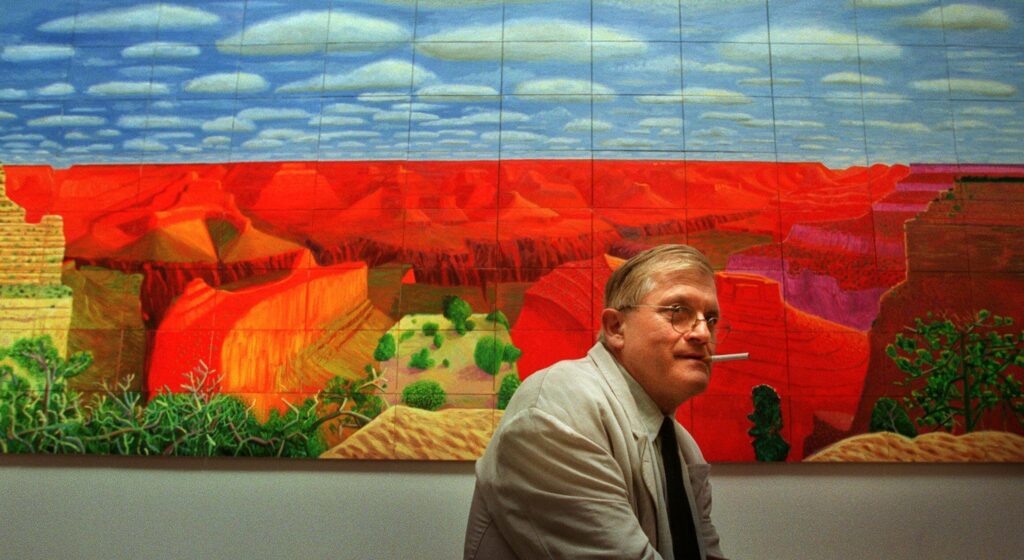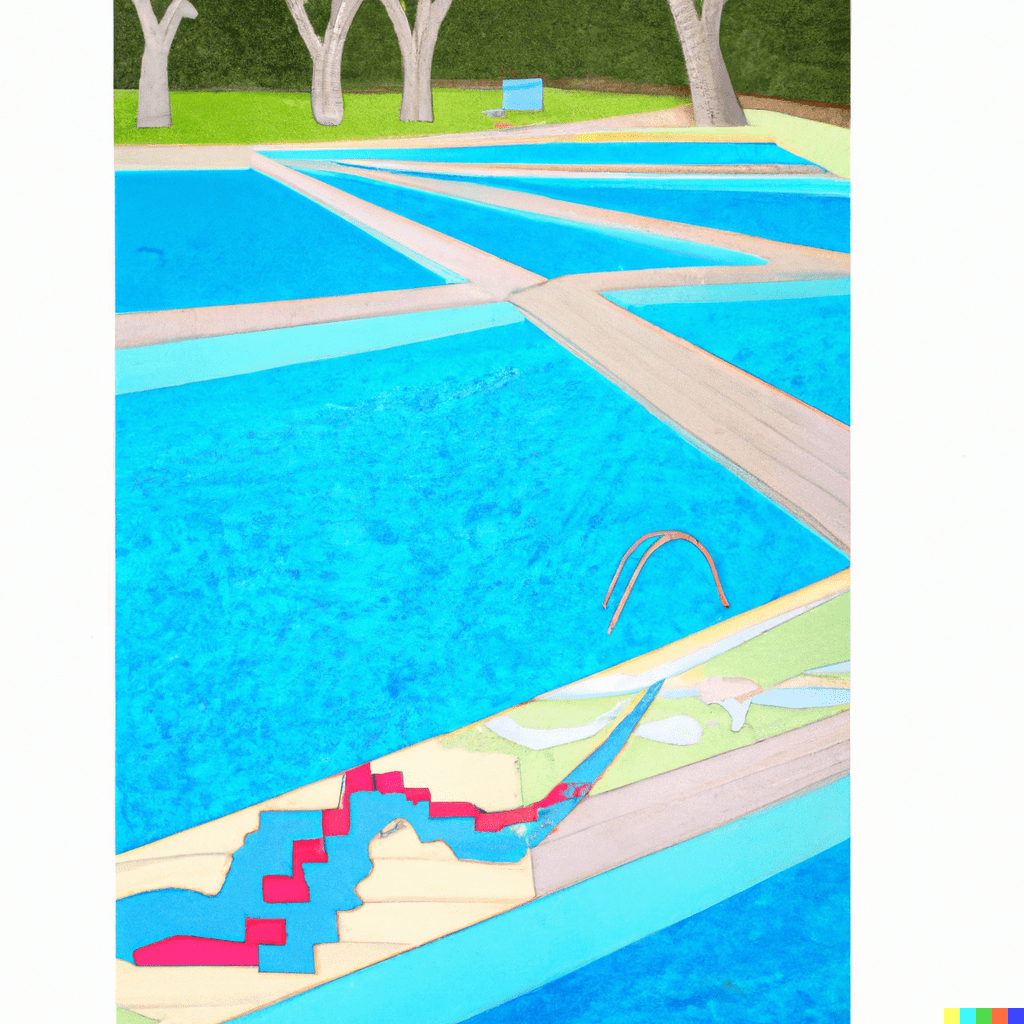
The Meaning Behind the David Hockney “Swimming Pool Motif”
Who Is David Hockney
Born in Bradford, West Yorkshire, in 1937, David Hockney attended the Royal College of Art in London from 1959 to 1962. During this time is where his boundary-pushing approach to the curriculum saw his talent recognized. He quickly rose to success as a pioneer of British Pop Art.
In 1964 he moved to Los Angeles, which he described as the “promised land” and a place where he “flowered.” It is through his iconic, highly saturated acrylic paintings that he captured the essence of high living in ‘60s California. From there, Hockney’s oeuvre has gone on to span photography, landscape painting, and experiments with the new technology of Contemporary art, like iPad painting. Today alongside Jeff Koons and Damien Hirst, he is one of the wealthiest living artists.

The Complex Character
Though his early works displayed traits of expressionism similar to those of fellow artists Francis Bacon and Matisse, Hockney’s career is generally viewed as having been tied to the Pop Art movement. His simplistic, flat, colorful, and brash style of painting holds a deeper nuance, a common thread with pop-art pieces. The subject matter is easily observed, but it is in understanding its complexity that the observer may struggle.
What do Hockney’s Pools Represent?
Liberation and Freedom
The swimming pool motif that characterized Hockney’s early works from the 60s and 70s was something he came across by chance. When he first arrived in Los Angeles in the early 1960s, he was struck by the sheer number of swimming pools in the city. In contrast to his home country of England, where they were considered a luxury, swimming pools in Los Angeles were commonplace.
The move to Los Angeles also provided more than accessibility to swimming pools and temperate weather. Homosexuality was illegal in the UK until 1967. As a self-confessed ‘homosexual propagandist’, David Hockney felt the lack of an expressive queer space be stifling both personally and professionally. He was drawn to the creative potential of queer in image making, one of these spaces being the backyard swimming pool.
In America, Hockney’s swimming pools kept this erotic power, no longer tied up in the oppressive social proprieties of post-war Britain. The permissive atmosphere of ’60s California allowed him to explore sexuality and friendship through depictions of fluid surfaces.
A Sense of Creative Exploration
The swimming pools also presented Hockney with an interesting technical challenge: representing the constantly changing surface of the water. In Portrait of an Artist (Pool with Two Figures), he depicts the movement of the water’s surface, caused by the swimmer’s movements, with wavy white lines cutting through the blue and patchwork shadows. He also captures the distorting effect of the water on the swimmer’s body, which contrasts sharply with the clarity of the figure in pink above.
Best Examples of Hockney’s Pool Paintings

A Bigger Splash
Completed in 1967, A Bigger Splash alludes to the luxury and indulgence found in Los Angeles during the 1960s. The painting depicts a sun-drenched swimming pool with a mid-century pink building and an empty chair in the background. The silhouette of neighboring buildings is reflected in the rear window. The whole scene is void of people or any sign of life apart from the splash.
Although a seductive depiction of a location, A Bigger Splash is not just that. According to Hockney, the real subject of the painting is the split-second moment of the splash itself, frozen on canvas.
Hockney painted the picture from a photograph of a splash taken by someone else. He later commented how he had spent much longer painting the splash than the house behind it – even though a splash lasts two seconds and a building is permanently there. This contradiction fascinated him.
Portrait of an Artist (Pool With Two Figures)
One of David Hockney’s most famous works, Portrait of an Artist (Pool With Two Figures) sold for $90.3 million at Christie’s in November 2018. At the time, this was the highest price ever paid for a work by a living artist.
The large-scale acrylic on canvas painting depicts two male figures, one underwater and the other standing fully dressed beside the swimming pool, looking down on the swimming figure. This scene is set against the backdrop of the luscious green hills and trees, which disappear into a hazy sky, a true homage to the Californian scenery found in his later works. Hockney employs his characteristically saturated colors and simplified flattened shapes to conjure up this iconic image.
The male situated at the edge of the pool is meant to represent Hockney’s former lover, Peter Schlesinger. The inclusion of Schlesinger in the composition adds a layer of personal emotion to the painting as a whole, making it all the more powerful. As he looks down at the male figure in the pool, a figure that we as a viewer cannot distinguish as being Hockney or a new partner, we sense that there is this inner desire and motive caught in the spacing of the two figures.